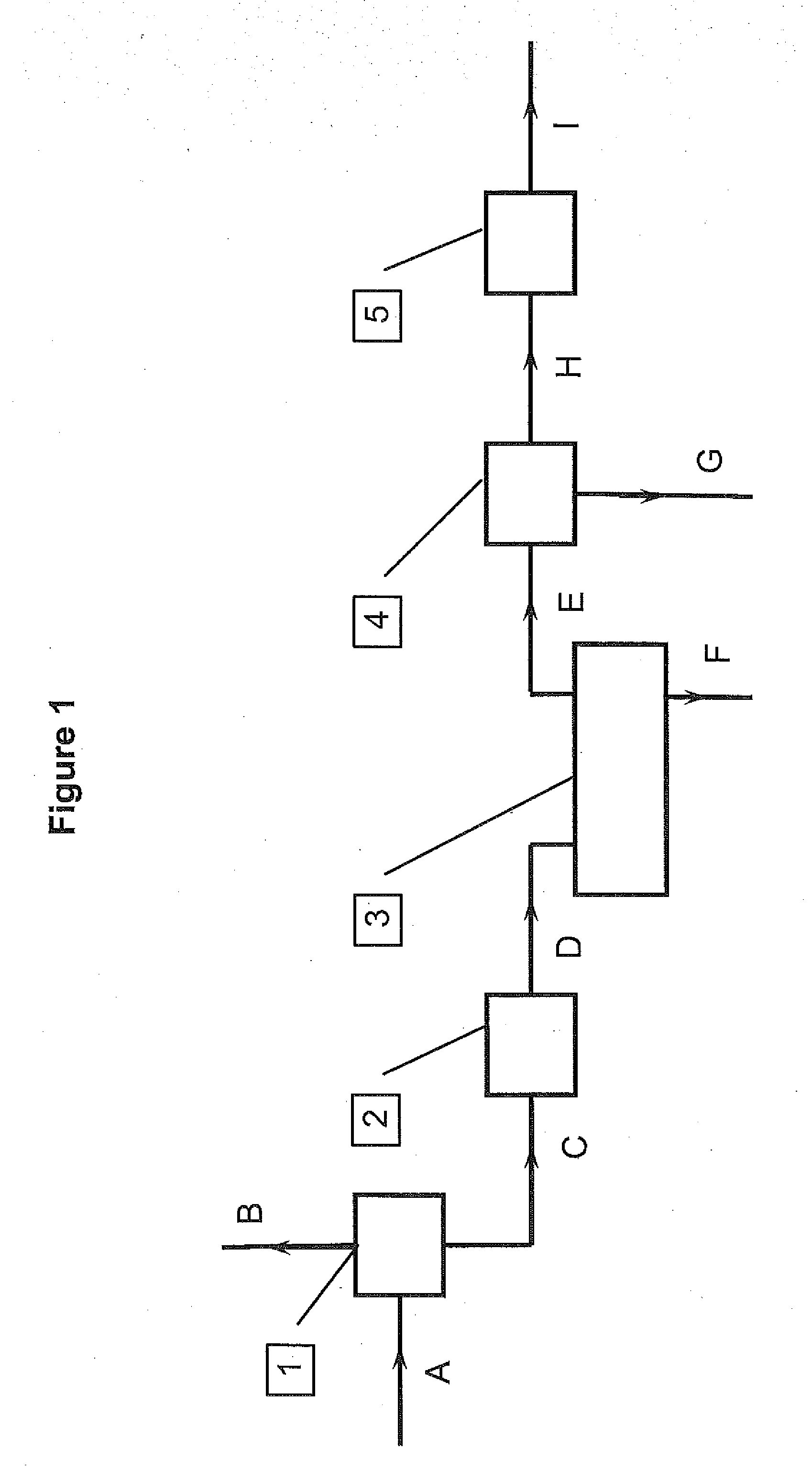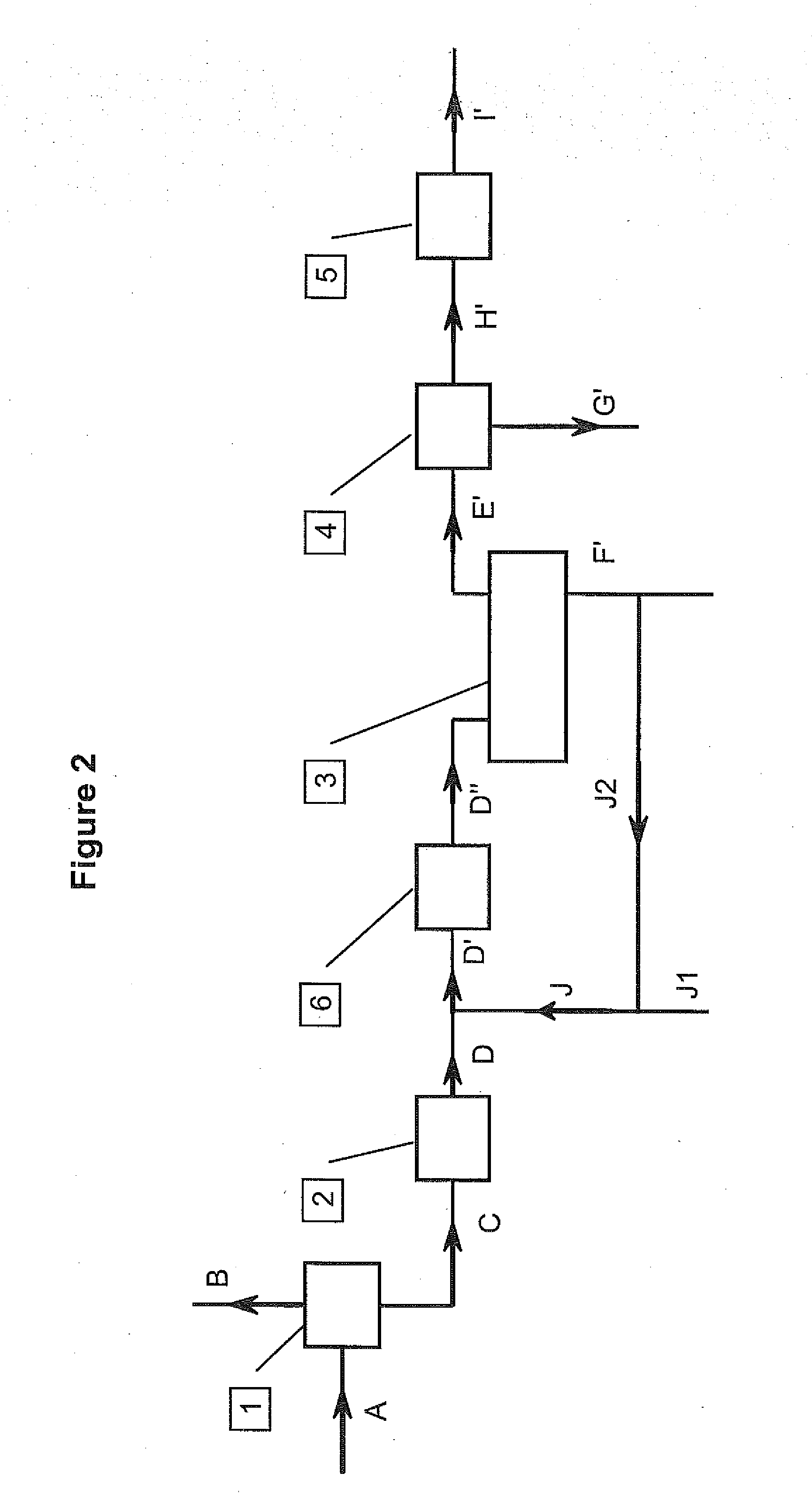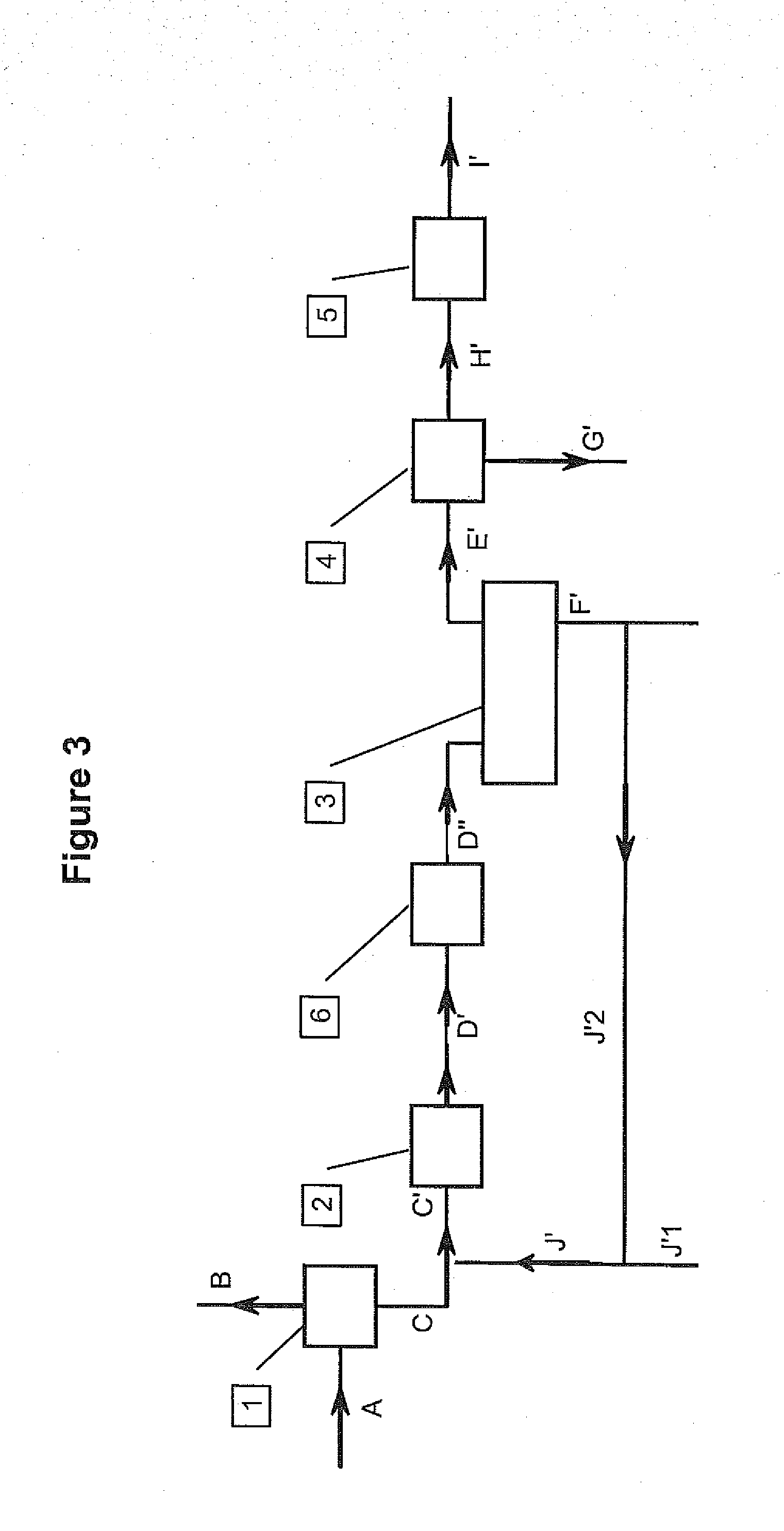Decantation improvement in a method of producing alkyl esters from vegetable or animal oil and an aliphatic monoalcohol
- Summary
- Abstract
- Description
- Claims
- Application Information
AI Technical Summary
Benefits of technology
Problems solved by technology
Method used
Image
Examples
example 1
Comparative
[0088]A sample A of the ester-glycerin mixture is taken after the excess methanol evaporation stage carried out at the reaction section outlet, and after the cooling stage (corresponds to stream D in FIG. 1). This sample comes in form of an emulsion.
[0089]A sample B is prepared in the laboratory by contacting 97% esters (biofuel meeting specifications) with 3% glycerin of purity of at least 97% by mass. One liter of the mixture is placed for 20 minutes in an IKA Ultraturrax type mechanical agitator rotating at 21,000 rpm.
[0090]The rate of fall of the glycerin drop in the continuous ester phase depends on various factors: the difference in density ρ between the ester phase and the glycerin phase, the viscosity μ of the ester phase and the diameter d of the drop. The latter parameter related to the size of the drop is the most important because, for droplets of sufficiently small size, the decantation rate varies according to the square of the diameter.
[0091]The equation go...
example 2
According to the Invention
[0094]A sample C is prepared in the same way as sample B by adding 25% by volume of glycerin of purity of at least 97% by mass. Mechanical stirring provided by the rotation of a propeller shaft at 450 rpm is applied to this 800-ml volume sample C for 15 minutes.
[0095]The same measurements taken on sample C as those taken on samples A and B show that the decantation front moves 20 cm forward in 10 hours. The smaller droplets have a diameter calculated by means of the Stokes law equation of 12 μm.
[0096]The progress of the decantation front is thus much more significant for sample C wherein recontacting with glycerin was carried out. It can thus be observed that the size of the droplets has increased after mixing with glycerin and stirring. In the presence of a larger amount of glycerin, the probability of encounter between a microdroplet with added glycerin is high, hence increased coalescence. Stirring also promotes these encounters by increasing the motion ...
example 3
According to the Invention
[0097]Tests were carried out on site with a 50-mm diameter column. The column was filled with glass balls that are 2 or 6 mm in diameter. The tests consisted in varying the flow rate of the emulsion comprising 4 mass % glycerin in ester while the flow rate of the glycerin used for recontacting was maintained constant at 58 kg / h. The flow was an ascending (UF) or a descending (DF) cocurrent flow.
[0098]Glycerin concentration measurements at the column inlet and outlet, performed on the ester phase after recontacting on the glass ball bed, allowed to estimate the recontacting efficiency expressed as follows:
η=(1-CoutletCinlet)×100
[0099]The table hereafter sums up the majority of the tests carried out:
EmulsionFlow typeBallsBedflow rate(DF ordiameterheightRecontactingkg / hUF)mmin cmefficiency %153DF2.04030149UF6.013031150DF6.013033253DF2.0403536DF6.01305368UF2.01305370DF2.013053
[0100]It can be observed that recontacting in the column clearly allows the amount of ...
PUM
 Login to View More
Login to View More Abstract
Description
Claims
Application Information
 Login to View More
Login to View More - R&D
- Intellectual Property
- Life Sciences
- Materials
- Tech Scout
- Unparalleled Data Quality
- Higher Quality Content
- 60% Fewer Hallucinations
Browse by: Latest US Patents, China's latest patents, Technical Efficacy Thesaurus, Application Domain, Technology Topic, Popular Technical Reports.
© 2025 PatSnap. All rights reserved.Legal|Privacy policy|Modern Slavery Act Transparency Statement|Sitemap|About US| Contact US: help@patsnap.com



